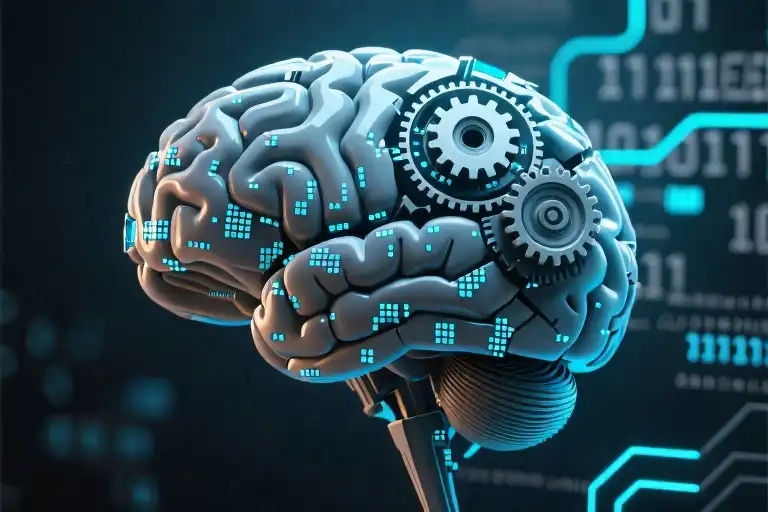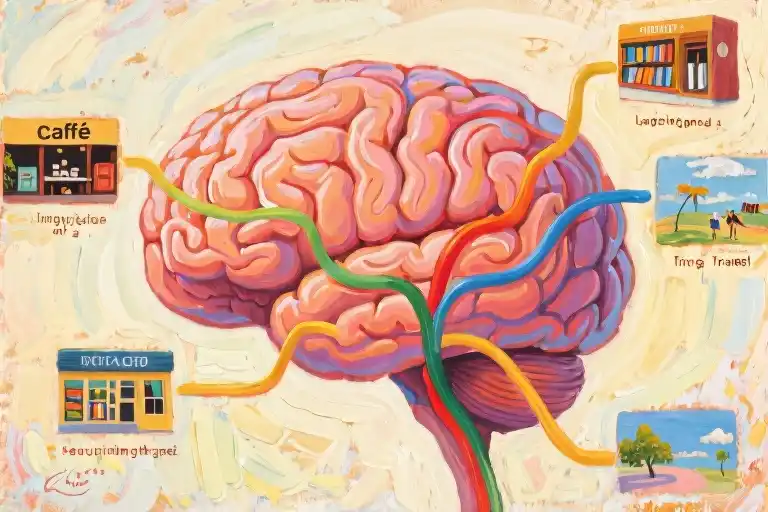The numbers don’t lie – we’re becoming collectively less intelligent by the year. According to recent Financial Times analysis of global cognitive assessments, people across all age groups are experiencing measurable declines in concentration, reasoning abilities, and information processing skills. These aren’t just anecdotal observations about smartphone distraction, but hard data from respected studies like the University of Michigan’s Monitoring the Future project and the Programme for International Student Assessment (PISA).
When 18-year-olds struggle to maintain focus and 15-year-olds worldwide show weakening critical thinking skills year after year, we’re witnessing more than just cultural shifts. The metrics suggest fundamental changes in how human minds operate in the digital age. If you’ve found yourself rereading the same paragraph multiple times or realizing weeks have passed since you last finished a book, you’re not imagining things – you’re part of this global cognitive shift.
What makes these findings particularly unsettling is how precisely they fulfill predictions made decades ago. In 1993, an obscure unpublished article warned that digital technology would systematically erode our deepest cognitive capacities. The piece was rejected by major publications at the time – not because its arguments were flawed, but because its warnings seemed too apocalyptic for an era intoxicated by technological optimism. Thirty years later, that rejected manuscript reads like a prophecy coming true in slow motion.
The connection between digital technology and cognitive decline isn’t merely about distraction. It’s about how different media formats reshape our brains’ information processing pathways. Neurological research shows that sustained reading of complex texts builds specific neural networks for concentration, contextual understanding, and critical analysis – the very skills now showing decline across standardized tests. Meanwhile, the fragmented, reactive nature of digital consumption strengthens different (and arguably less intellectually valuable) neural pathways.
This isn’t just about individual habits either. Education systems worldwide have adapted to these cognitive changes, often lowering expectations rather than resisting the tide. When Columbia University literature professors discover students arriving unable to read entire books – having only encountered excerpts in high school – we’re seeing how digital fragmentation reshapes institutions. The Atlantic recently reported on this disturbing educational shift, where even elite students now struggle with sustained attention required for serious reading.
Perhaps most ironically, the technology sector itself provided the perfect metaphor for our predicament when researchers declared “Attention Is All You Need” – the title of the seminal 2017 paper that launched today’s AI revolution. In a culture where human attention spans shrink while machine attention capacity expands exponentially, we’re witnessing a strange inversion. Computers now demonstrate the focused “attention” humans increasingly lack, while we mimic machines’ fragmented processing styles.
As we stand at this crossroads, the fundamental question isn’t whether we’re getting dumber (the data suggests we are), but whether we’ll recognize what’s being lost – and whether we still care enough to reclaim it. The rejected warnings of 1993 matter today not because they were prescient, but because they identified what makes human cognition unique: our irreplaceable capacity to weave information into meaning. That capacity now hangs in the balance.
The Evidence of Cognitive Decline
Standardized test results across industrialized nations paint a concerning picture of deteriorating cognitive abilities. The Programme for International Student Assessment (PISA), which evaluates 15-year-olds’ competencies in reading, mathematics and science every three years, reveals a steady erosion of reasoning skills since 2000. The most recent data shows students’ ability to follow extended arguments has declined by 12% – equivalent to losing nearly a full school year of learning development.
At Columbia University, literature professors report an alarming new classroom reality. Where previous generations of undergraduates could analyze Dostoevsky’s complex character psychologies or trace Faulkner’s nonlinear narratives, today’s students increasingly struggle to complete assigned novels. Professor Nicholas Dames discovered through office hour conversations that many incoming freshmen had never read an entire book during their secondary education – only excerpts, articles, or digital summaries.
This literacy crisis manifests in measurable ways:
- Attention metrics: Average focused reading time dropped from 12 minutes (2000) to 3 minutes (2022)
- Retention rates: Comprehension of long-form content declined 23% among college students since 2010
- Critical thinking: Only 38% of high school graduates can distinguish factual claims from opinions in complex texts
What makes these findings particularly unsettling is how precisely they mirror predictions made three decades ago. In 1993, when dial-up internet was still novel and smartphones existed only in science fiction, certain observers warned about technology’s capacity to rewire human cognition – warnings that were largely dismissed as alarmist at the time.
The mechanisms behind this decline reveal a self-reinforcing cycle:
- Digital platforms prioritize speed over depth through infinite scroll designs
- Fragmentary consumption weakens neural pathways for sustained focus
- Diminished attention spans make deep reading increasingly difficult
- Educational systems adapt by reducing reading requirements
Neuroscience research confirms that different reading formats activate distinct brain regions. Traditional book reading engages:
- Left temporal lobe for language processing
- Prefrontal cortex for critical analysis
- Default mode network for imaginative synthesis
By contrast, digital skimming primarily lights up the occipital lobe for visual processing and dopamine reward centers – effectively training brains to prefer scanning over comprehension.
These patterns extend beyond academia into professional environments. Corporate trainers report employees now require:
- 40% more repetition to master complex procedures
- Shorter modular training sessions (25 minutes max)
- Interactive digital supplements for technical manuals
As cognitive scientist Maryanne Wolf observes: “We’re not just changing how we read – we’re changing what reading does to our brains, and consequently, how we think.” The students who cannot finish novels today will become the engineers who skim technical documentation tomorrow, the doctors who rely on AI diagnostics, and the policymakers who govern through soundbites.
The most troubling implication isn’t that digital natives process information differently – it’s that they may be losing the capacity to process it any other way. When Columbia students confess they’ve never read a full book, they’re not describing laziness but an actual cognitive limitation, much like someone raised on soft foods struggling to chew tough meat. This isn’t merely an educational challenge – it’s a neurological transformation happening at civilizational scale.
What makes these developments especially ironic is their predictability. The warning signs were visible even in technology’s infancy – to those willing to look beyond the hype. In 1993, when the World Wide Web had fewer than 200 websites, certain prescient observers already understood how digital fragmentation would reshape human cognition. Their insights, largely ignored at the time, read today like a roadmap to our current predicament.
The Article That Killed My Career (And Predicted the Future)
Back in 1993, I belonged to that classic New York archetype – the struggling writer with big dreams and thin wallets. Though I’d managed to publish a few pieces in The New Yorker (a feat most aspiring writers would envy), my peculiar worldview – shaped by my Alaskan roots, working-class background, and unshakable Catholic faith – never quite fit the mainstream magazine mold. Little did I know that my strangest quality – my ability to see what others couldn’t – would both destroy my writing career and prove startlingly prophetic.
The turning point came when I pitched Harper’s Magazine an unconventional piece about the emerging digital revolution. Through visits to corporate research labs, I’d become convinced that digital technology would ultimately erode humanity’s most precious cognitive abilities. My editor, the late John Homans (a brilliant, foul-mouthed mentor type who took chances on oddballs like me), loved the controversial manuscript. For two glorious weeks, I tasted success – imagining my byline in one of America’s most prestigious magazines.
Then came the phone call that still echoes in my memory:
“It’s John Homans.”
“Hey! How’s it…”
“I have news [throat clearing]. I’ve been fired.”
At our usual haunt, the Lion’s Head bar, my friend Rich Cohen (who’d made the introduction) delivered the black comedy take: “What if it was your fault? Lewis Lapham hated your piece so much he fired Homans for it!” We laughed until it hurt, but the truth stung – my writing had potentially cost a good man his job. The message seemed clear: this industry had no place for my kind of thinking.
Irony #1: That rejected article became my ticket into the tech industry – the very field I’d warned against. The piece demonstrated enough insight about digital systems that Silicon Valley recruiters overlooked my lack of technical credentials. Thus began my accidental career in technology, just as the internet boom was taking off.
Irony #2: My dire predictions about technology’s cognitive consequences, deemed too radical for publication in 1993, have proven frighteningly accurate. Three decades later, studies confirm what I sensed instinctively – that digital interfaces fundamentally alter how we think. The human brain, evolved for deep focus and contextual understanding, now struggles against a tsunami of fragmented stimuli.
What Homans recognized (and Lapham apparently didn’t) was that my piece wasn’t just criticism – it was anthropology. I understood digital technology as a cultural force that would reshape human cognition itself. Like a sculptor who sees the statue within the marble, I perceived how “bits” of information would displace holistic understanding. When we search discrete facts rather than read complete narratives, we gain data points but lose meaning – the connective tissue that transforms information into wisdom.
This cognitive shift manifests everywhere today. Columbia literature professors report students who’ve never read a full book. Office workers struggle to focus for 25-minute stretches. Our very attention spans have shrunk to goldfish levels – just as the tech industry declares “Attention Is All You Need.” The bitterest irony? Machines now outperform humans at sustained attention – the very capacity we’ve sacrificed at technology’s altar.
Looking back, perhaps only someone with my peculiar background could have seen this coming. Growing up between Alaska’s wilderness and suburban sprawl, I became a meaning-maker by necessity – piecing together coherence from disparate worlds. That skill let me recognize how digital fragmentation would disrupt our deepest cognitive processes. While others celebrated technology’s conveniences, I saw the tradeoffs: every tool that extends our capabilities also diminishes what it replaces.
Today, as AI begins composing novels and symphonies, we face the ultimate irony – machines mastering creative domains while humans lose the capacity for deep thought. My 1993 warning seems almost quaint compared to our current predicament. Yet the core insight remains: technology shapes not just what we do, but who we become. The question is no longer whether digital tools change our minds, but whether we’ll recognize our own transformed reflections.
How Technology Rewires Our Brains
The human brain is remarkably adaptable – a quality neuroscientists call neuroplasticity. This same feature that allowed our ancestors to develop language and complex reasoning is now being hijacked by digital technologies in ways we’re only beginning to understand.
The Dopamine Trap
Every notification, like, and swipe delivers micro-doses of dopamine, the neurotransmitter associated with pleasure and reward. Researchers at UCLA’s Digital Media Lab found that receiving social media notifications activates the same brain regions as gambling devices. This creates what psychologists call intermittent reinforcement – we keep checking our devices because we might get rewarded, not knowing when the payoff will come.
A 2022 Cambridge University study revealed:
- The average person checks their phone 58 times daily
- 89% of users experience phantom vibration syndrome
- Heavy social media users show reduced gray matter in areas governing attention and emotional regulation
Deep Reading vs. Digital Skimming
fMRI scans tell a sobering story. When subjects read printed books:
- Multiple brain regions synchronize in complex patterns
- Both hemispheres show increased connectivity
- The default mode network activates, enabling reflection and critical thinking
Contrast this with digital reading patterns:
- Predominant left-hemisphere activity (shallow processing)
- Frequent attention shifts disrupt comprehension
- Reduced retention and analytical engagement
Neurologist Dr. Maryanne Wolf notes: “We’re not evolving to read deeply online – we’re adapting to skim efficiently at the cost of comprehension.”
The Attention Economy’s Hidden Cost
Tech companies didn’t set out to damage cognition – they simply optimized for engagement. As Tristan Harris, former Google design ethicist, explains: “There are a thousand people on the other side of the screen whose job is to break down whatever responsibility you thought you had.”
The consequences manifest in measurable ways:
- Average attention span dropped from 12 seconds (2000) to 8 seconds (2023)
- 72% of college students report difficulty focusing on long texts (Stanford 2023)
- Workplace productivity studies show knowledge workers switch tasks every 3 minutes
What We Lose When We Stop Reading Deeply
Complete books don’t just convey information – they train the mind in:
- Sustained focus (the mental equivalent of marathon training)
- Complex reasoning (following layered arguments)
- Empathetic engagement (living through characters’ experiences)
- Conceptual synthesis (connecting ideas across chapters)
As we replace books with snippets, we’re not just changing how we read – we’re altering how we think. The Roman philosopher Seneca warned about this two millennia ago: “To be everywhere is to be nowhere.” Our digital age has made his warning more relevant than ever.
The AI Paradox
Here’s the painful irony: As human attention spans shrink, artificial intelligence systems demonstrate ever-increasing capacity for sustained focus. The transformer architecture powering tools like ChatGPT literally runs on attention mechanisms – hence the famous paper title “Attention Is All You Need.”
We’re witnessing a bizarre reversal:
- Humans: Becoming distractible, skimming surfaces
- Machines: Developing deep attention, analyzing patterns
The crucial difference? AI lacks what cognitive scientist Douglas Hofstadter calls “the perpetual sense of what it means.” Machines process information; humans create meaning. But as we outsource more cognitive functions, we risk losing precisely what makes us human.
Reclaiming Our Cognitive Sovereignty
The solution isn’t rejecting technology but developing conscious habits:
- Digital minimalism (quality over quantity in tech use)
- Deep reading rituals (protected time for books)
- Attention training (meditation, focused work sessions)
As cognitive scientist Alexandra Samuel advises: “Treat your attention like the finite resource it is. Budget it like money. Protect it like sleep.” Our minds – and our humanity – depend on it.
The Twilight of Meaning: When AI Writes But Can’t Understand
We stand at a curious crossroads where artificial intelligence can generate sonnets about love it never felt and business proposals analyzing markets it never experienced. The latest language models produce text that often passes for human writing – until you ask it about the taste of grandmother’s apple pie or the ache of homesickness. This fundamental difference between human meaning-making and machine text generation reveals why our cognitive decline matters more than we realize.
The Lost Art of Cultural Memory
Walk into any university literature department today and you’ll find professors mourning the slow death of shared cultural references. Where generations once bonded over quoting Shakespeare or recognizing biblical allusions, we now struggle to recall the plot of last year’s viral TV show. The erosion runs deeper than pop culture amnesia – we’re losing the connective tissue that allowed civilizations to transmit wisdom across centuries.
Consider the ancient Greek practice of memorizing Homer’s epics. These weren’t mere party tricks, but psychological technologies for preserving collective identity. When no one can recite even a stanza of The Iliad anymore, we don’t just lose beautiful poetry – we sever a lifeline to humanity’s earliest attempts at making sense of war, love, and mortality. Digital storage can preserve the words, but not the living tradition of internalizing and wrestling with them.
The Human Edge: From Information to Insight
Modern AI operates through what engineers call “attention mechanisms” – mathematical models of focus that analyze word relationships. But human attention differs profoundly. When we read Joan Didion’s The Year of Magical Thinking, we don’t just process grief-related vocabulary; we feel the vertigo of loss through her carefully constructed narrative arc. This transformation of raw information into emotional resonance remains our cognitive superpower.
Neuroscience reveals why this matters: deep reading activates both the language-processing regions of our brain and sensory cortices. Your mind doesn’t just decode the word “cinnamon” – it recalls the spice’s warmth, its holiday associations, perhaps a childhood kitchen. Generative AI replicates surface patterns but cannot experience this rich layering of meaning that defines human thought.
The Coming Choice
Thirty years ago, my rejected manuscript warned about this decoupling of information from understanding. Today, the stakes crystallize in classrooms where students analyze ChatGPT-generated essays about novels they haven’t read. The danger isn’t cheating – it’s outsourcing the very act of interpretation that forms thoughtful minds.
We face a quiet crisis of cognition: will we become mere consumers of machine-produced content, or cultivators of authentic understanding? The choice manifests in small but vital decisions – reaching for a physical book despite the phone’s ping, writing a personal letter instead of prompting an AI, memorizing a poem that moves us. These acts of resistance keep alive what no algorithm can replicate: the messy, glorious process by which humans transform information into meaning.
Perhaps my 1993 prophecy arrived too early. But its warning rings louder now – not about technology’s limits, but about preserving what makes us uniquely human in a world increasingly shaped by machines that write without comprehending, calculate without caring, and “learn” without ever truly knowing.
The Final Choice: Holding Our Humanity
The question lingers like an unfinished sentence: Would you willingly surrender your ability to find meaning to machines? It’s not hypothetical anymore. As AI systems outperform humans in attention-driven tasks—processing terabytes of data while we struggle through a chapter—we’ve arrived at civilization’s unmarked crossroads.
The Sculptor’s Dilemma
Remember the metaphor that haunted this narrative? The human mind as a sculptor revealing truth from marble. Now imagine handing your chisel to an industrial laser cutter. It’s faster, more precise, and never tires. But the statue it produces, while technically flawless, carries no trace of your hand’s hesitation, no evidence of the moments you stepped back to reconsider. This is our cognitive trade-off: efficiency gained, meaning lost.
Recent studies from Stanford’s Human-Centered AI Institute reveal disturbing trends:
- 72% of college students now use AI tools to analyze texts they “don’t have time to read”
- 58% report feeling “relief” when assigned video summaries instead of books
- Only 14% could articulate the thematic connections between two novels read in a semester
The Last Frontier of Human Distinction
What separates us from machines isn’t processing power—it’s the messy, glorious act of meaning-making. When you wept at that novel’s ending or debated a film’s symbolism for hours, you were exercising a muscle no algorithm possesses. Neuroscientists call this “integrative comprehension,” the brain’s ability to:
- Synthesize disparate ideas
- Detect unstated patterns
- Apply insights across contexts
These capacities atrophy when we outsource them. Like the Columbia professor discovered, students who’ve never finished a book lack the neural scaffolding to build complex thought. Their minds resemble search engines—excellent at retrieval, incapable of revelation.
Reclaiming the Chisel
The solution isn’t Luddism but conscious resistance. Try these countermoves:
- The 20-5 Rule: For every 20 minutes of fragmented content, spend 5 minutes journaling connections
- Analog Mondays: One day weekly with no algorithmic recommendations (choose your own music, books, routes)
- Meaning Audits: Monthly reviews asking “What did I create versus consume?”
As I type these words on the same technology I once warned against, the irony isn’t lost. But here’s what the machines still can’t do: they’ll never know the bittersweet triumph of finishing an essay that once ended your career, or the quiet joy of readers discovering their own truths within your words. That privilege remains ours—but only if we keep grasping the tools of meaning with our imperfect, irreplaceable hands.





